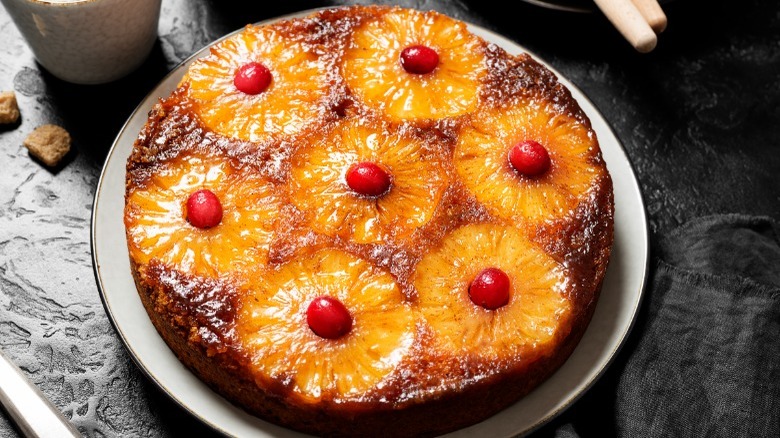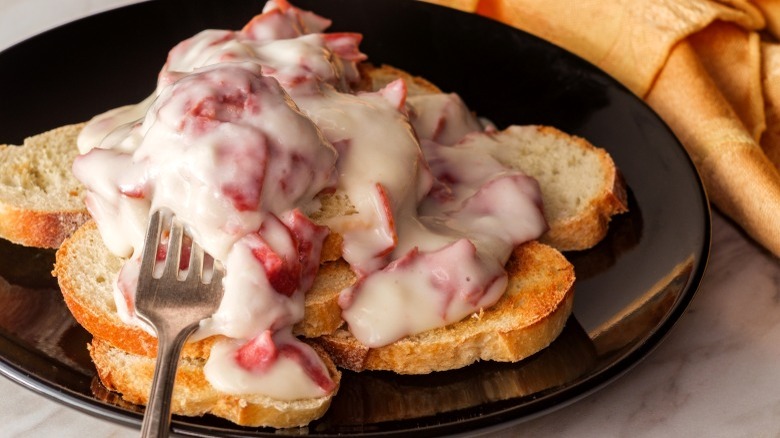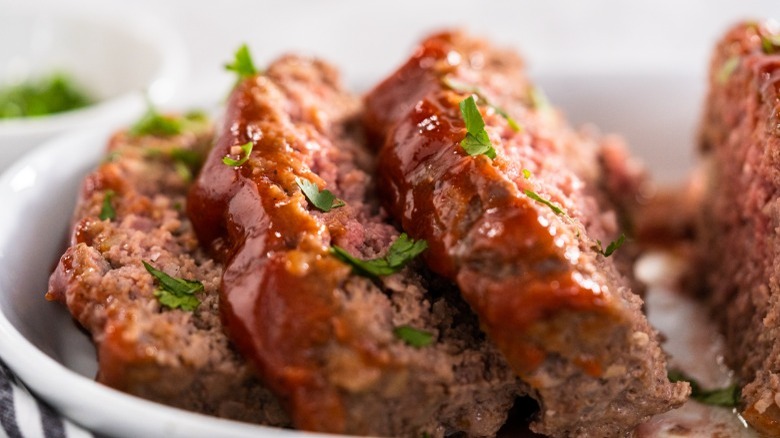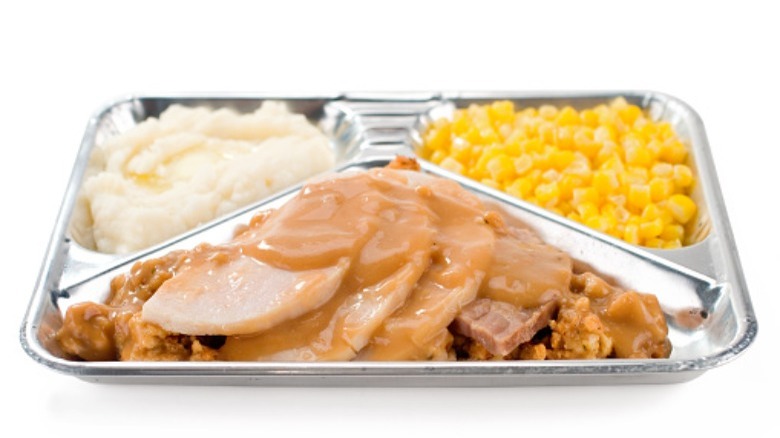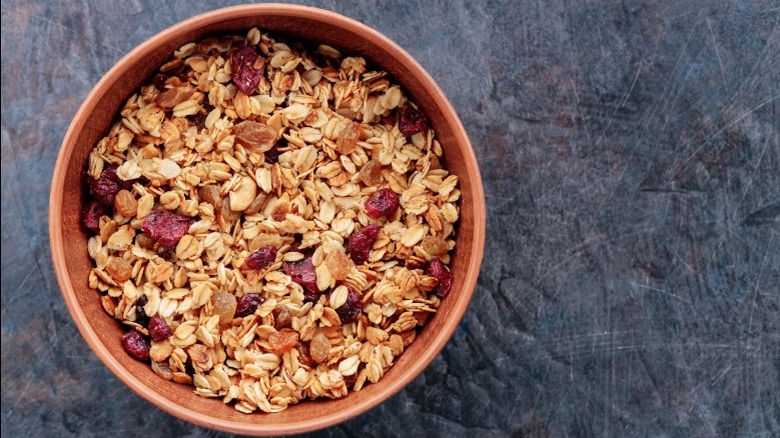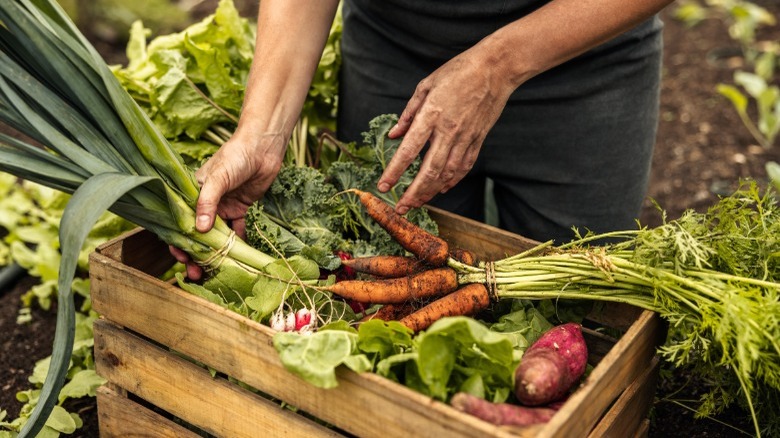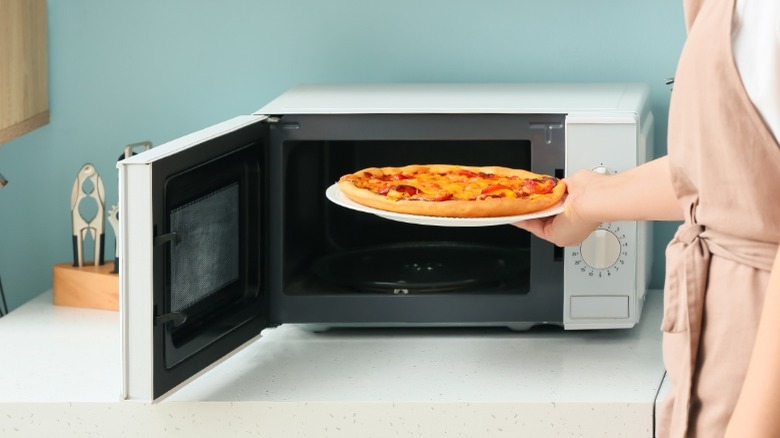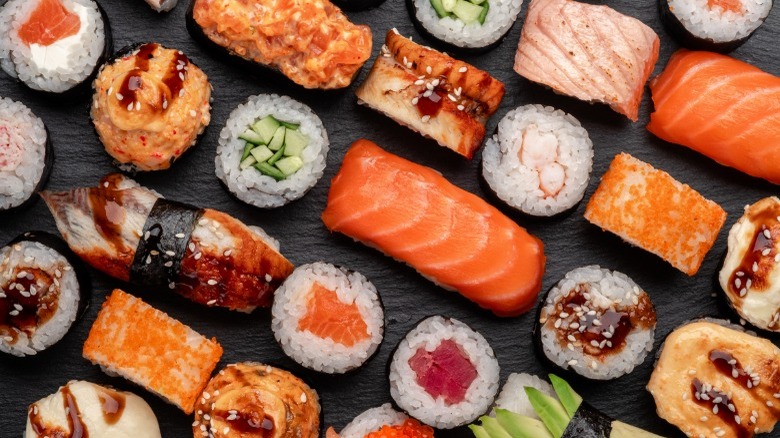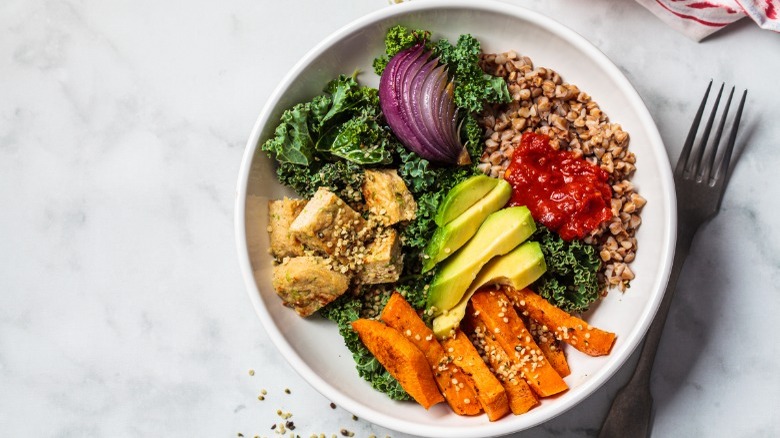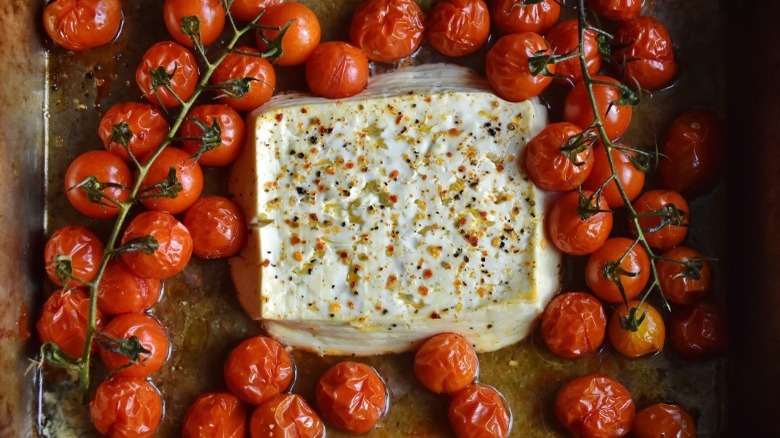Top Food Trends For Every Decade Of The Last 100 Years
In the ever-shifting culinary landscape, the past century has seen food trends ebb and flow, driven by a curious blend of health concerns, convenience, and the pursuit of novelty. From the late 19th century, the emphasis on healthful foods and technological advancements gave way to a burgeoning industrial food system and an insatiable appetite for variety. As the decades rolled on, diet culture, wartime ingenuity, postwar economic uplift, and ruthless corporate advertising shaped the trajectory of American cuisine. The diverse yet homogenized processed foods of the 20th century exemplified the allure of choice over quality.
Throughout this culinary journey, Americans have grappled with food phobias, oscillating between the desire to indulge and the need to maintain health. The nation's preference for choice has often superseded the pursuit of quality, resulting in a dining experience marked by an overwhelming array of options, casualness, and a relentless need for speed. By the 1970s and 1980s, however, a renewed appreciation for natural taste and local, seasonal produce began to challenge the established norms.
The push for authenticity and nostalgia for a simpler, more rural past have slowly created a fundamental shift in American attitudes toward food. In the grand tapestry of American cuisine, one can trace the threads of health, convenience, and novelty as constants, weaving their way through each decade's food trends. The challenge now lies in reconciling these long-held values with a renewed interest in authenticity, sustainability, and the sensuous pleasures of taste.
1920s
Ah, the Roaring Twenties! A decade marked by Prohibition, decadence, and prosperity. The popularity of finger foods like deviled eggs resulted from speakeasies serving bite-sized dishes to patrons to drive up sales with their low-price, high-volume service. At the same time, at-home cocktail parties became the norm, introducing a vast array of appetizers. Prohibition also boosted soft drink production, reestablishing the soda fountain as a social hub.
This period was the start of democratic kitchen appliances and convenience foods which were mostly marketed to women. Companies taking advantage of the lack of government regulation started to emphasize health claims in women's magazines, capitalizing on wellness aspirations and the newly fashionable slimness. As more women moved into the workforce and servants became a thing of the past, toasters and coffee percolators were offered as replacements. Flash-freezing food was an exciting invention, along with Kool-Aid, Reese's Peanut Butter Cups, Velveeta cheese, and Popsicles. Widespread commercial canning brought dishes like pineapple upside-down cake to the masses, while Jell-O democratized visually captivating desserts and aspic salads.
Although anti-immigration laws were in place, food trends were influenced by foreign flavors. Chinese and Italian restaurants gained middle-class patronage, and soy sauce, water chestnuts, and ravioli became more commonplace. Other notable foods of the 1920s included Green Goddess salad dressing, S'mores, fruitcakes, chicken à la king, scalloped potatoes, clam chowder, and Caesar salad. Overall, the 1920s witnessed a fascinating blend of culinary influences, technological advancements, and social changes that shaped the way Americans ate and entertained.
1930s
The 1930s are synonymous with the hardships of the Great Depression, which greatly influenced the decade's food trends and habits. With money tight, people sought budget-friendly options, leading to the introduction of soup kitchens, penny restaurants, and food stamps. The emergence of self-service shopping at inexpensive supermarkets, such as King Kullen, allowed for more efficient shopping experiences and paved the way for modern grocery stores. Post-U.S. Highway 66 completion in 1938, roadside restaurant franchising, such as Howard Johnson's, started to cater to travelers seeking consistent and predictable dining options, and farmers got a more efficient way of transporting their goods.
This era of economic struggle, while difficult, sparked innovation in the culinary world, with lasting influences on American cuisine. Inventive yet affordable dishes like Mock Apple Pie, Wacky Cake, and Hoover Stew became household staples. Home refrigeration became more common, allowing families to shop less frequently and store perishables longer, which helped sneak more salads into the diet. In addition, cookbooks like "The Joy of Cooking" helped homemakers create nutritious meals on a budget, while the growing knowledge of vitamins made enriched foods the norm.
At the same time, processed food creations like Campbell's canned soups, Nestle Tollhouse Chocolate Chip Cookies, sliced Wonder Bread, and Spam made their sensational debuts. From gelatin-based dishes, casseroles, and creamed chipped beef to instant coffee and Lay's Potato Chips, the 1930s showcased the resilience and creativity of Americans in the face of adversity, leaving an indelible mark on the nation's food history.
1940s
The 1940s, a decade broken in half by World War II, saw food trends that were shaped by rationing, substitutions, and a focus on convenience. As canned foods were reserved for soldiers, frozen convenience foods like french fries began to define home cooking. People had to be resourceful in the kitchen, stretching proteins and using ingredients on hand. Ground beef was a popular choice, as it required fewer stamps to obtain and could be stretched into several meals like meatloaf, mince-stuffed vegetables, and meatball spaghetti. Communal victory gardens played a crucial role in providing additional produce for the army, giving way to dishes such as Harvard beets and home preservation practices.
This era also saw the invention of some iconic processed foods, including M&Ms, Ragu, and Kraft sliced American cheese. Morning routines changed with the introduction of frozen concentrated orange juice in 1945, making it a breakfast staple. Other inventions like Betty Crocker's cake mixes and Minute Rice made life easier for busy families, while enriched flour and bread gained prominence in American diets.
Aluminum foil became a kitchen staple, and so did Tupperware. The postwar period introduced new indulgent treats like Chiffon cakes, as well as new cuisines and flavors, although Chinese and Italian restaurants were still the most popular. Cocktail parties were a mainstay throughout the decade, featuring fruit, fish, and vegetable cocktails, as well as alcoholic concoctions like dry martinis. Overall, the 1940s were the last decade of 20th-century American food hardship.
1950s
After decades of forced frugality, the 1950s — marked by economic stabilization, a rise in living standards, and the spread of television — saw a surge in food trends focused on convenience, efficiency, and mass distribution. As the transport system developed and purchasing power rose, consumers became increasingly dependent on the market for food. The Populuxe era ushered in a new wave of eating out and relying on time-saving processed convenience foods, with a focus on predictability and uniformness at the cost of regional specialties and taste.
The decade was a golden age for fast food chains, as the new interstate highway system paved the way for the likes of Dunkin' Doughnuts, Burger King, McDonald's, Pizza Hut, and IHOP. Frozen food inventions, such as TV dinners, Eggo Frozen Waffles, Haagen-Dazs Ice Cream, and fish sticks,were seen as beacons of progress, replacing war-reminiscent canned foods. As sugar reentered the market post-war, it was excitedly added to various foods, seen as both delicious and energizing.
Advertising encouraged women to spend less time cooking and more time participating in leisure activities, further fueling the demand for convenience foods and resulting in the rise of culinary kitsch. Amid the frenzy of food creativity, dishes like tuna noodle casserole, frosted meatloaf, and grasshopper pie emerged as favorites, often incorporating processed ingredients to create gourmet-like concoctions. In the 1950s, the pursuit of efficiency and homogenization of tastes dominated the culinary landscape, showcasing American abundance and leaving a lasting impact on food preferences and consumption patterns.
1960s
The 1960s was a transformative decade in American history, marked by overseas wars and the counterculture they inspired. Food trends were equally dynamic, reflecting the growing diversity and changing social landscape. With the introduction of Domino's, Taco Bell, and Wendy's, as well as novel inventions like Pop-Tarts and SpaghettiOs, the country's culinary scene once again embraced efficiency and convenience. The shopping revolution brought food brands into the spotlight, turning food-related activities and advertising into entertainment.
However, not everyone jumped on the consumerism bandwagon. The counterculture movement, comprising beatniks, hippies, and antiglobalists, sought alternative options that were raw, organic, or meatless, and protested against "plastic" food and genetically modified products.
Meanwhile, the interest in home cooking was still present, evident in the popularity of Julia Child's "Mastering the Art of French Cooking" and her TV show, which inspired elaborate dinner parties. However, food and cooking started to get increasingly sexist connotations, and this decade saw the emergence of cookbooks focusing on pleasing men in the dining room, attracting feminist criticism in works such as Betty Friedan's "The Feminine Mystique."
As people started to travel abroad, the country welcomed diverse food cultures: Japanese-American restaurants and the birth of the California roll are one example. Other popular dishes of the decade included shrimp cocktail, grape jelly meatballs, and eggs Benedict, all served alongside more exotic fare at dinner tables nationwide. Some 1960s dishes, like Beef Wellington and baked Alaska, made such a lasting culinary impact that they occasionally make a comeback.
1970s
Following in the footsteps of the 1960s counterculture, these were the years when both mass consumerism and its critique reached their peaks. Food trends in this era were greatly shaped by the increasing disenchantment with authorities and corporations in the wake of the Vietnam War, the Watergate scandal, and economic stagnation. Overall, the 1970s food scene was characterized by a growing awareness of ecological responsibility and a push against the standardization of the industrial food model.
On the one hand, trends of the previous decades were still going strong. New inventions like microwaves and slow cookers were slowly becoming household staples. New products like Cup O'Noodles, Hamburger Helper, and Quaker Oats granola, marketed as time-saving hacks for the working woman, gained popularity. Culinary kitsch kept evolving: Cheese and pineapple hedgehogs, ham and bananas hollandaise, and Watergate salad are among the 1970s dishes we wish would never come back. Additionally, fondue, carrot cake, pasta primavera, and quiches, as well as brunches (complete with eggs Benedict) and potluck-style dinners became trendy.
On the other hand, following the launch of Alice Waters' "Chez Panisse," a "delicious revolution" emerged, inspiring the nationwide rediscovery of natural flavors and local foods while planting seeds for the modern farm-to-table movement. This attitude shift emphasized sensuous pleasure and ecological responsibility that went beyond food's healthfulness or efficiency. The decade's natural food outlook laid the groundwork for today's infatuation with local, artisanal, and sustainable products.
1980s
A decade of opulence, high consumerism, and the foundation of the obesity epidemic was also when inventions such as chicken nuggets, Diet Coke, and microwave popcorn took the nation by storm. Fast food joints were all the rage, accounting for a whopping 40% of all money spent on dining out. The microwave revolutionized home cooking, with 25% of American households owning one by 1986. Still, the 1970s food industry critique led to the establishment of the Slow Food movement in Italy in 1986.
The 1980s saw the emergence of the post-modern food consumer, who ate and shopped according to mood, craving, and circumstance, seeking novelty and refusing to settle for less. For them, food was no longer just sustenance but an experience to be savored. Self-indulgent "yuppie" consumerism replaced naive hippie idealism, giving rise to establishments like Starbucks, Whole Foods, and high-end restaurants focusing on local ingredients and modern, elegant presentation.
At the same time, supermarket junk food peaked, producing a cornucopia of oddities, from Steak-umms to Pop Rocks. As dietary health awareness and obesity concerns grew, diet foods like Lean Cuisine gained popularity, even struggling to meet demand at one point. As such, food trends during this time were diverse, ranging from salad bars and fast food buffets to Nouvelle Cuisine and gourmet gadgets. Comfort foods made a comeback, and foreign cuisines such as Thai and Tex-Mex were spreading around, evidenced in sloppy joes, seven-layer dip, chop suey, pesto, tiramisu, and other popular dishes of the time.
1990s
The 20th century's last decade was a time when diet culture took center stage, and food became a curious blend of diet fads and culinary innovation. Following the 1987 stock market crash, the New American cuisine based on farm-to-table principles began to take root, while food TV exploded with celebrity chefs and reality cooking shows. The Internet brought us the first online food media like Epicurious, Allrecipes, and personal food blogs by David Lebovitz, David Leite, and Heidi Swanson.
Food corporations came under fire for their unscrupulous use of unhealthy ingredients, manipulative advertising, and lobbying efforts. As a result, sugar-free, low-fat diet foods were everywhere. Additionally, the "Eating Right Pyramid" and the Mediterranean diet emerged as healthier alternatives. Unfortunately, other 1990s diet fads were more restrictive and dangerously unscientific — think of the Blood Group diet, the Atkin's Diet, or the Sugar Busters Diet, which are thankfully in the past.
But it wasn't all diet-centric — veggie burgers, pasta salads, and sun-dried tomatoes gained popularity, as did home preservation and herb gardening. Molten chocolate lava cake, red velvet, and creme brulee ruled the dessert scene, while sushi finally became mainstream — even gas stations sold it. Baked brie and crab cakes became home entertaining staples. Fusion cuisine was the buzzword of the decade, and it seemed culinary rules were meant to be broken. But perhaps the most memorable of all restaurant trends was the rise of "tall" foods — remember when stacking food high was a mark of sophistication?
2000s
The start of the new millennium was marked by the Internet's rapid growth, the aftermath of 9/11, and a pesky recession. As the political subtext of eating emerged, farm-to-table became the norm, and people began to care more about the origin of their food than just the taste. Fast food lost its luster, making way for a revival of high-quality hamburgers, barbecue, and craft beer. Post 9/11, Americans sought solace in the comforting flavors of meatloaf, pizza, and mac 'n' cheese, and the 2008 recession led to a resurgence of budgeting and home cooking, rounding out a fascinating decade of culinary innovation and exploration.
As the Food Network transformed into more entertainment than education, chefs like Anthony Bourdain and Guy Fieri became household names, although a few female chefs like Rachael Ray and Ina Garten managed to break into the boys' club. However, if you wanted to learn how to avoid common cupcake mistakes, bountiful recipe websites were your best bet (as opposed to watching an episode of "Cupcake Wars").
Speaking of cupcakes, remember when a "Sex and the City" episode sparked a food craze that spread worldwide and lasted over a decade? They even endured the war on carbs launched by the South Beach and Atkins diets that urged us to cut them out. Finally, organic food and Starbucks frappuccinos transitioned from niche trends of the upper middle class to mainstream must-haves, while whole grain products emerged as the healthy new kid on the block.
2010s
The 2010s will always be remembered for their culinary quirks and gastronomic adventures. From food trucks ruling the streets in the early years to the rise of unicorn-inspired rainbow foods, the decade was an endless rollercoaster of flavors and innovation. As traditions waned and the suburban family model lost its sheen, Americans ventured out of their single-person homes, spending more on dining out than ever before. Food delivery apps seized the opportunity, ensuring our cravings were satiated with just a few taps on our screens. At the same time, meal kits and semi-processed foods swooped in to save the day, making the 10-minute meal a reality for busy folks everywhere.
Social media gave birth to viral food crazes like cronuts and ramen burgers that spread like wildfire, igniting taste buds across the nation. Some of the biggest food trends of the 2010s included fro-yo, pumpkin spice, ramen, matcha, hummus, quinoa, macarons, cake pops, kombucha, and bagels, which all jostled for their share of the limelight. The joys of dining in the digital age included dabbling in the art of food presentation, fueled by the insatiable desire to capture that perfect Instagram-worthy shot.
Amid the wacky and whimsical, a health-conscious revolution was brewing. Superfoods and plant-based alternatives were all the rage, with kale, avocado, and açaí bowls taking center stage. And let's not forget the best food inventions that came out this decade: the Impossible Burger and Beyond Meat, which challenged the very notion of meat-eating itself.
2020s
The present decade, though not even halfway done, has put us through quite a lot already: the coronavirus pandemic, the climate crisis, the war in Ukraine, and a growing divide between the haves and have-nots. But tumultuous times inevitably bring (occasionally positive) change, even in the realm of gastronomy.
Despite all the hardships, the 2020s are brimming with food trends in never-before-seen numbers, as witnessed by extensive guides to the best and worst food trends, as well as predictions for every year. In times of instability and general anxiety, the food world has returned to its roots, embracing home baking, fermentation, budgeting, and foraging. The ever-changing aesthetics of food became as important as its flavors and political messaging. TikTok turned into the go-to recipe source, where umami-laden delights dance alongside CBD-infused concoctions. Of course, one can't forget the internet sensations born on the app: Dalgona coffee, feta pasta, and the elaborate butter board.
Amidst all this frivolous experimentation, the gluten-free scare appeared in line with the great American tradition of demonizing a foodstuff each decade. We've also witnessed a revival of opulent dining, soaring grocery prices, and a growing gap in food accessibility. The public health, climate, and political crises of recent years have shone a glaring spotlight on the instability and unsustainability of the global food system. As we venture further into this turbulent decade, let us keep our eyes, hearts, and stomachs open to the deeper side of food trends that continue to shape our ever-evolving world.

